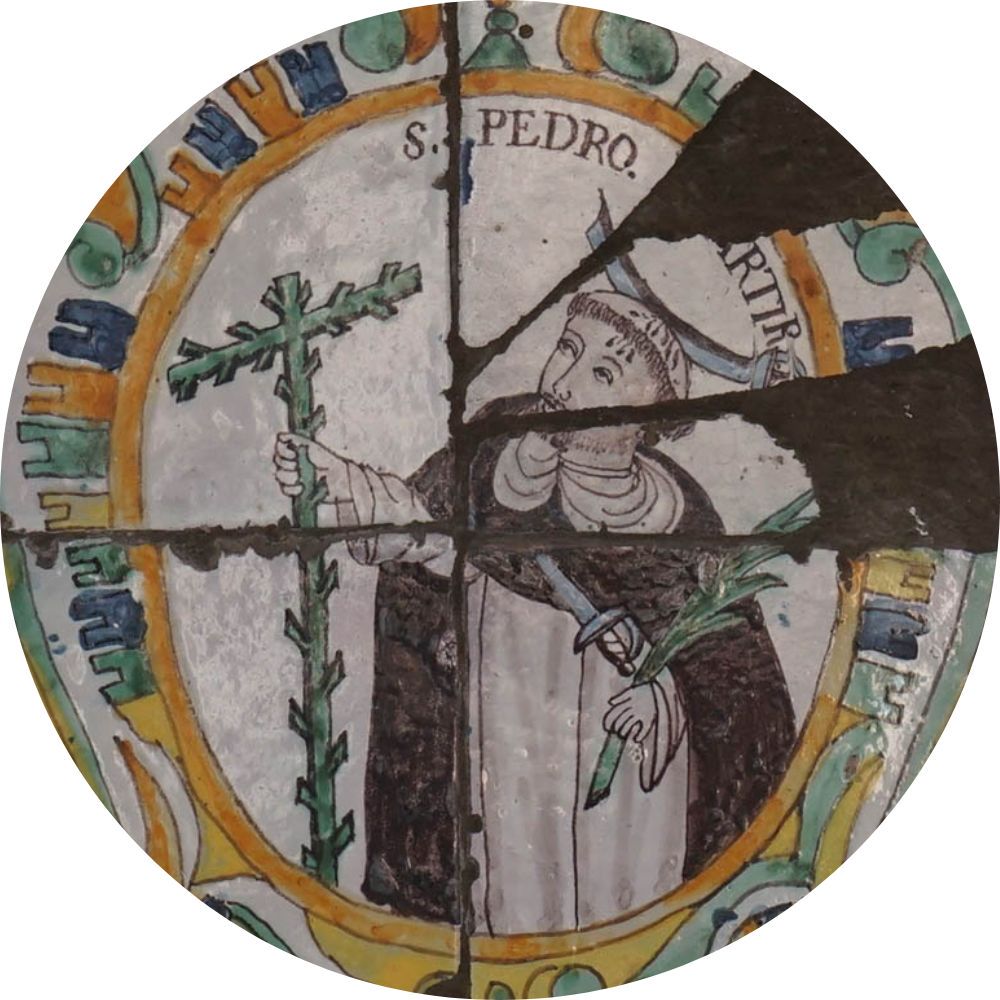St. Peter of Verona
St. Peter of Verona, priest and martyr
(ca. 1203-1252)
He was born around 1203 in Verona. Although he came from a family of heretics, he received a Catholic upbringing. Around 1216, he began his education at the University of Bologna, where he met Saint Dominic. Listening to his sermons, he made the decision to join the Dominicans. He entered the order in 1221 in Bologna, shortly before the death of St. Dominic, which he witnessed. After seven years of formation, he was ordained a priest.
Soon after his ordination, he was sent to Milan, where he was to fight heresy at the will of Gregory IX. There he worked on creating anti-heretic movements and incorporating papal laws against heretics into city statutes. All of his work, however, was primarily pastoral in nature.
From early 1235, he served as Prior in Como, where he produced a work dissecting heresy. From then on he was an itinerant preacher who successfully fought heresy. He visited Venice, Bologna, among others, and also Mantua, Vercelli and Rome. After visiting the Eternal City, he went to Florence in 1244, where he organized a Catholic militia and engaged in political activity.
At the request of Innocent IV, he held many diplomatic posts. At the same time, he was Prior in Asti and a participant in the chapters of the Lombard Province and the General Chapter in Trier. On June 13, 1251, he became inquisitor of Lombardy. He took no part in trials against heretics and even declared a period of grace for them. Before the expiration of this two-week period, on April 6, 1252, he was assassinated. When he was attacked he was supposed to say the words of Jesus dying on the cross Into Thy hands, O Lord, I commit my spirit, and when he settled to the ground he was supposed to write Credo in Deum with his finger. Then the assassin dealt him a fatal blow. He was buried in the cemetery of the martyrs in Milan.
His cult developed rapidly. On March 9, 1253, less than a year after his death, Pope Innocent IV canonized him, and the saint's assassin converted and joined the Order of Preachers, where he repented of his sins and died in the reputation of holiness. His first hagiography was written by Tomasso Angi, who was Peter's superior and they lived together for a while.
He is mentioned twice in the liturgical calendar: the first time on April 29, and the second on May 7, as a commemoration of the transfer of the saint's relics. In the Dominican order both these memorials were celebrated on April 6 and June 4.
In iconography, St. Peter of Verona is most often depicted wearing a Dominican habit and with a sword stuck in his head or with a wound on his head. In the mosaics of the Santo Domingo Monastery in Lima, in addition to the sword stuck in his head, he is stabbed in the heart with a second sword. In addition, he stands in front of the cross and in his hand holds the palm of martyrdom (symbol of reward in heaven for martyrdom). We can also find other attributes: a book and a quill, which refer to the saint's writing and scholarly activities, and others to his martyrdom.
Bibliography:
- Michele P., Delle vite de gli huomini illustri del ordine di San Domenico, Pavia 1618, pp. 65-71.
- Villa J. S., Processo per l’uccisione di S. Pietro martire, „Archivio Storico Lombardo”, 4 (1877), pp. 790-794.
- Mortier D.-A., Saint Pierre de Vérone, Martyr de l'Ordre de Saint Dominique, Prince de la Sainte Inquisition romaine, Parisiis 1899.
- Orlandi S., S. Pietro Martire da Verona. Leggenda di fra Tommaso Agni da Lentini nel volgare trecentesco, con lettera di fra Roderico de Atencia. Introduzioni, storiche biografiche e note, Firenze 1952.
- Dondaine, A., Saint Pierre Martyr, „Archivum Fratrum Praedicatorum”, 23 (1953), s. 66-162.
- Frascisco R., San Pietro da Verona. Martire Domenicano, Roma 1972 (Collana „Alta Vena”, 4).
- Merlo G.G., Pietro da Verona, Pietro Martire. Difficoltà e proposte per lo studio di un inquisitore beatificato, [in:] Culti dei santi, istituzioni e classi sociali in età pre-industriale, cura di S. Boesch-Gajano, L. Sebastiani, L’Aquila 1984, pp. 471-488.
- Caldwell Ch., Peter Martyr: The Inquisitor as Saint, „Comitatus. A Journal of Medieval and Renaissance Studies”, 31 (2000), issue 1, p. 137-174.
- Russo D., Des saints et des stigmates. À propos de saint François d’Assise et de saint Pierre de Vérone martyr. Iconographie et projet de chrétienté au XIIIe siècle, „Les Cahiers de l’Herne”, 75 (2001), pp. 55-70.
- Schürer M., Die Findung des Heiligen. Dominikus von Guzmán und Petrus Martyr als Figuren zwischen Topik und Singularität, [in:] Das Eigene und das Ganze. Zum Individuellen im mittelalterlichen Religiosentum, éd. G. Melville, M. Schürer, Münster 2002, pp. 339-37.
- Merlo G.G., L’affare frate Pietro da Verona/san Pietro martire, [in:] I signori da Giussano, gli eretici e gli inquisitori, éd. G.G. Merlo, Giussano 2004, pp. 15-49.
- Boureau A., La patine hagiographique. Saint Pierre martyr dans la légende dorée, [in:] Scribere sanctorum gesta. Recueil d’études d’hagiographie médiévale offert à Guy Philippart, éd. É. Renard, M. Trigalet, X. Hermand, P. Bertrand, Turnhout 2005, pp. 359-366.
- Martire per la fede. San Pietro da Verona domenicano e inquisitore, a cura di F. Gianni, Bologne 2007.
- Prudlo D., The martyred inquisitor. The Life and Cult of Peter of Verona († 1252), Aldershot-Burlington 2008 (Church, Faith and Culture in the Medieval West).
- Benedetti M., Inquisitori lombardi del Duecento, Rome 2008, pp. 5-73.
- Ames C.Ch., Rigtheous Persecution. Inquisition, Dominicans and Christianity in the Medlle Ages, Philadelphia 2009 (The Middle Ages Series), pp. 62-67 (Polish translation: Inkwizycja i Bracia Kaznodzieje. Słuszne prześladowanie, transl. A. Gomola, Poznań 2013, pp. 112-118).

